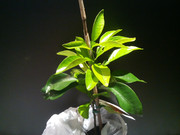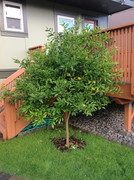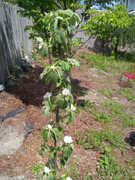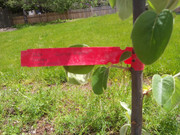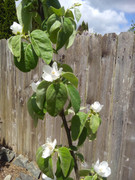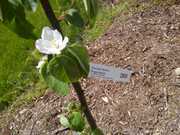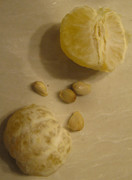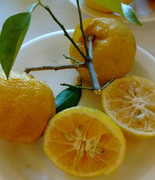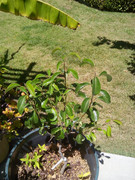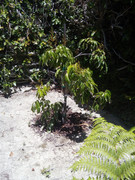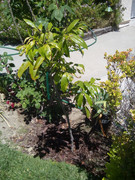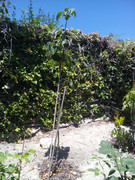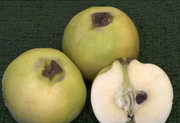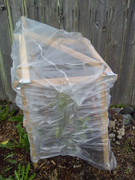1501
Tropical Fruit Discussion / Re: Grafted Atemoya Question
« on: May 26, 2017, 01:21:56 AM »
I would aim for about 3 or 4 fruits, since the tree is only 3 years old, although of course you could go for up to 5 or 6 fruits.
Since you are in Hawaii, that's definitely a big plus for the tree's growth so you could leave on more fruits than you would otherwise; maybe 5 is a good number.
It also depends on how thick the branches are, and whether there's going to be multiple fruits developing on the same branch. You don't want the heavy fruits weighing down the young branches too much.
Some might ask why the tree would be producing 20 fruits if it wasn't completely natural. Well, when the tree is growing on grafted rootstock it doesn't always know how to properly behave. Rootstock forces precociousness and makes the tree begin fruiting much earlier in its lifespan than it normally would if it was growing in the wild.
Since you are in Hawaii, that's definitely a big plus for the tree's growth so you could leave on more fruits than you would otherwise; maybe 5 is a good number.
It also depends on how thick the branches are, and whether there's going to be multiple fruits developing on the same branch. You don't want the heavy fruits weighing down the young branches too much.
Some might ask why the tree would be producing 20 fruits if it wasn't completely natural. Well, when the tree is growing on grafted rootstock it doesn't always know how to properly behave. Rootstock forces precociousness and makes the tree begin fruiting much earlier in its lifespan than it normally would if it was growing in the wild.

